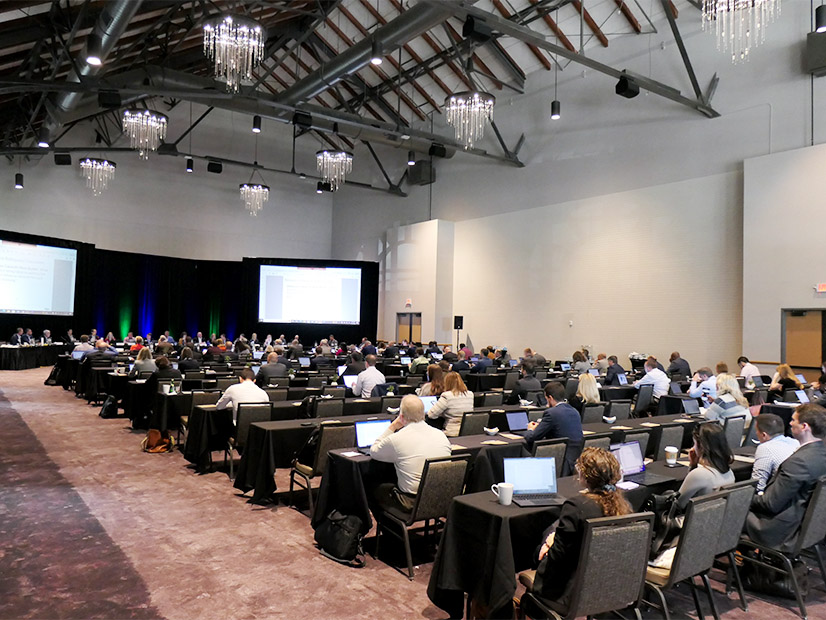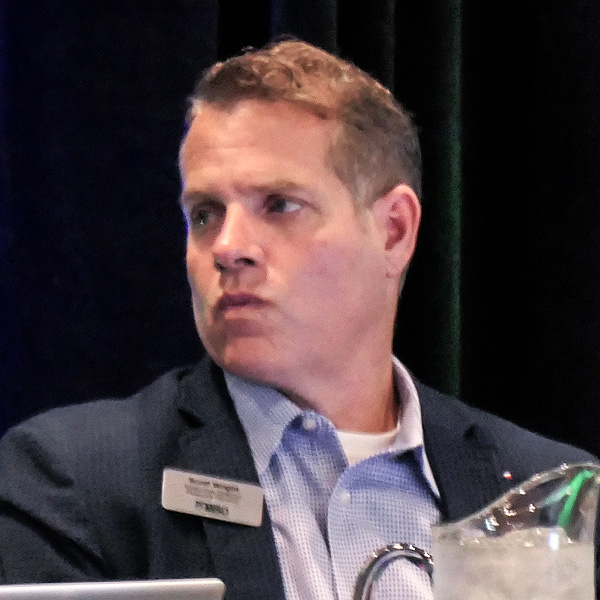MINNEAPOLIS — MISO’s quarterly Board Week explored the reasons behind MISO’s growing number of generation projects that have the stamp of approval to connect to the system but remain unbuilt.
49 GW Greenlit but Unfinished
MISO said many of its new resources that have struck generator interconnection agreements are beset by delays and cancellations, “mostly driven by build-related issues.” It said those lost and paused resources increase risk for a “future capacity or reliability attributes shortfall.”
By MISO’s count, 49 GW approved through its interconnection queue are awaiting construction, with an average delay to commercial operations of more than 650 days.
“That’s nearly 50 GW. This is pretty sizable. … This is a very pressing situation. We need to get iron in the ground. That’s what needs to happen,” Executive Director of Resource Planning Scott Wright said during a Sept. 12 System Planning Committee meeting of the Board of Directors. He added that MISO is negotiating new GIAs all the time and the postponed gigawatt amount is certain to rise by year’s end.
Wright said MISO’s plan to place an annual megawatt limit on project proposals, collect higher entry fees, enact escalating penalty charges and require developers to prove they have secured land will make for more certain generation projects that ultimately will mitigate long-term risk. (See MISO Sticks with MW Caps, Higher Fees to Pare Down Queue Requests.)
“With all the capital flowing in, it’s not hard to imagine a queue that’s 500 GW,” Wright said. He added MISO needs to be more selective about the projects it allows in to produce good network upgrade studies and approve projects that are a sure thing.
But Wright said incoming, mostly renewable generation likely won’t fare well in terms of accredited capacity. He also said EPA’s proposed carbon rule stands to pull the plug on “tens and tens” of gigawatts.
MISO has said EPA’s proposed emissions rule for fossil plants would supercharge retirements so they outpace the commercialization of new technologies like green hydrogen and carbon capture. (See EPA Power Plant Proposal Gets Mixed Reception in Comments.)
“Thank you so much for that very calming discussion,” MISO Director Mark Johnson joked.
MISO members at a Sept. 13 meeting of MISO’s Advisory Committee were light on answers as to how to get the 49 GW online sooner.
“These are not speculative projects. We ran into the pandemic and supply chain issues,” Invenergy’s Arash Ghodsian said.
Wisconsin Public Service Commissioner Tyler Huebner seconded that view. He said developers ran headlong into the pandemic, and then a federal investigation into solar panels hampered new capacity.
“It has been a compounding of issues on the solar side in particular,” Huebner said.
“It’s incredibly challenging to build out new infrastructure, new power plants,” Invenergy’s Eric Thoms added.
North Dakota Public Service Commissioner Julie Fedorchak suggested MISO and members simply allow more time to develop generation. She said special interest groups and landowners are getting more vocal in proceedings at state commissions and commissioners are having to extend timelines to hear them out.
“I think we need to just bake in more time. Not to give up, but just be realistic,” she said.
Ameren’s Jeff Dodd seconded that longer timelines probably are the new reality. He said there’s more “fatigue” these days among landowners who are asked to host infrastructure.
Clean Grid Alliance’s Beth Soholt asked MISO for more data behind the delays on new build capacity, including locations and whether local communities are opposing projects. However, Soholt said transmission construction must catch up to meet the needs of generation developers.
“We have a transmission problem — we’re working on it — but we did have a 10-year lag between the multivalue projects and [the first long-range transmission portfolio]. So, we have a backlog in some of the generation projects that want to connect,” she said.
Solholt said it’s important the nearly $2 billion Joint Targeted Interconnection Queue (JTIQ) portfolio of 345-kV lines is built to ease the queue backlog. She also said MISO’s Environmental Sector prefers members not simply leave fossil generation operating on the system for “longer and longer.”
WEC Energy Group’s Chris Plante said though MISO can complete scores of generator interconnection agreements, some projects still are “conditional until the transmission reinforcements are there.”
“I want to make sure we have a heightened sense of urgency,” MISO CEO John Bear said a day later at the MISO board meeting. He said MISO is up against a wave of generation retirements and similarly tapering reserves at PJM and SPP, which means MISO won’t be able to rely on imported power from neighbors in the future.
“We’re going to have to take care of ourselves,” he said.
Bear said while MISO can export on windy days, it often runs into trouble when wind drops off. He advocated for “dispatchable, long-duration assets” on the system. He said though MISO remains fuel neutral, “we’re big fans of reliability.”



